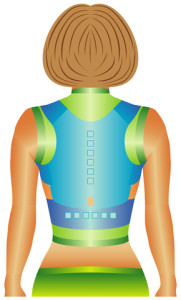 This is something else from my old site that had a few versions even before it got there. The first version was written back in 1990s urged by an Alexander technique teacher I studied with for a bit on road to finding Feldenkrais®. The version below was probably written 10 or 11 years ago.
This is something else from my old site that had a few versions even before it got there. The first version was written back in 1990s urged by an Alexander technique teacher I studied with for a bit on road to finding Feldenkrais®. The version below was probably written 10 or 11 years ago.
Thinking about what I might add at this point I would say that while I still look at what appears to be someone’s “posture” I see that as an indicator of likely ways that they will move -and use the information as an entry point for a mutual exploration, rather than a lecture about how to “stand up straight”.
On Coming to Terms with the “P” Word
By Marsha Novak
The P word?… you know, posture.
As a physical therapy student some eighteen years ago, I was taught to evaluate posture based on observing the relative positions of key anatomical landmarks… ear over shoulder over hip, etc… We were instructed in the perils of poor posture. Those forward heads and overly curved lumbar spines would most certainly result in stiff necks, sore backs and worse.
One of our missions as good PT citizens was to save our patients from such maladies by teaching them good posture, which as best as I could figure out meant instructing people how to line up their landmarks. If one of our charges just couldn’t seem to get it right, it was up to us to figure out which muscle groups were either too tight or too weak to allow for the ideal configuration of body parts and then try and come up with appropriate strengthening and stretching exercises. The results were at best, mixed.
Even back then I felt like I had as many questions as answers. First of all, why did bad posture seem to be more the norm than good posture? By the time I got to PT school I had studied dance for many years and was pretty darn sure that the ability to line up body parts in an ideal configuration really didn’t have much to do with the ability to move on stage or in life with grace and ease … hmmm.
Still I believed that having bad posture couldn’t be very healthy for the musculoskeletal system and as a young orthopedic/sports medicine physical therapist I tried to get my patients to fix theirs … only to see them revert by their next visit.
The reason I became a PT in the first place was because I was interested in movement and wanted a way to pursue that interest and feed myself (and my cats) at the same time. If I could ever figure out how it was that those natural athletes moved with such ease and grace and teach that to my patients I would be one happy and successful physical therapist.
Partly for self-improvement and partly in quest of the answer to my question I began to study the Alexander Technique. Sometime after, a friend encouraged me to try an Awareness through Movement® class. The variety in the ATM classes intrigued me. Eventually I had my first “hands on” Functional Integration® lesson and decided I wanted to learn to do this work, so I enrolled in the Berkeley 3 practitioner training.
My training in the Feldenkrais® Method has been a big step in helping me come to terms with the “P word”. I clearly understand posture as a neuromusculoskeletal event. By that I mean that our brains and nervous systems organize patterns of posture and movement so that it is unlikely that any isolated exercise would be of much use. I also am less concerned with ideal static postures that have little to do with accomplishing any meaningful act easily and effectively. I now suspect that the reason so many adults lose the natural good posture and ease of movement they had as small children is that the stresses and strains we experience in the world, be they physical, mental or emotional create habits of muscular tension.
Lying on the floor performing gentle movements with care and attention in Awareness through Movement lessons, we become increasingly aware of these habits and explore alternatives. In “hands on ” Functional Integration lessons, the exploration continues and deepens based on individual needs and requests.
Now as a Feldenkrais® Practitioner, nearly twenty years into my professional career I feel that I have some real tools for addressing the postural concerns of my clients.
